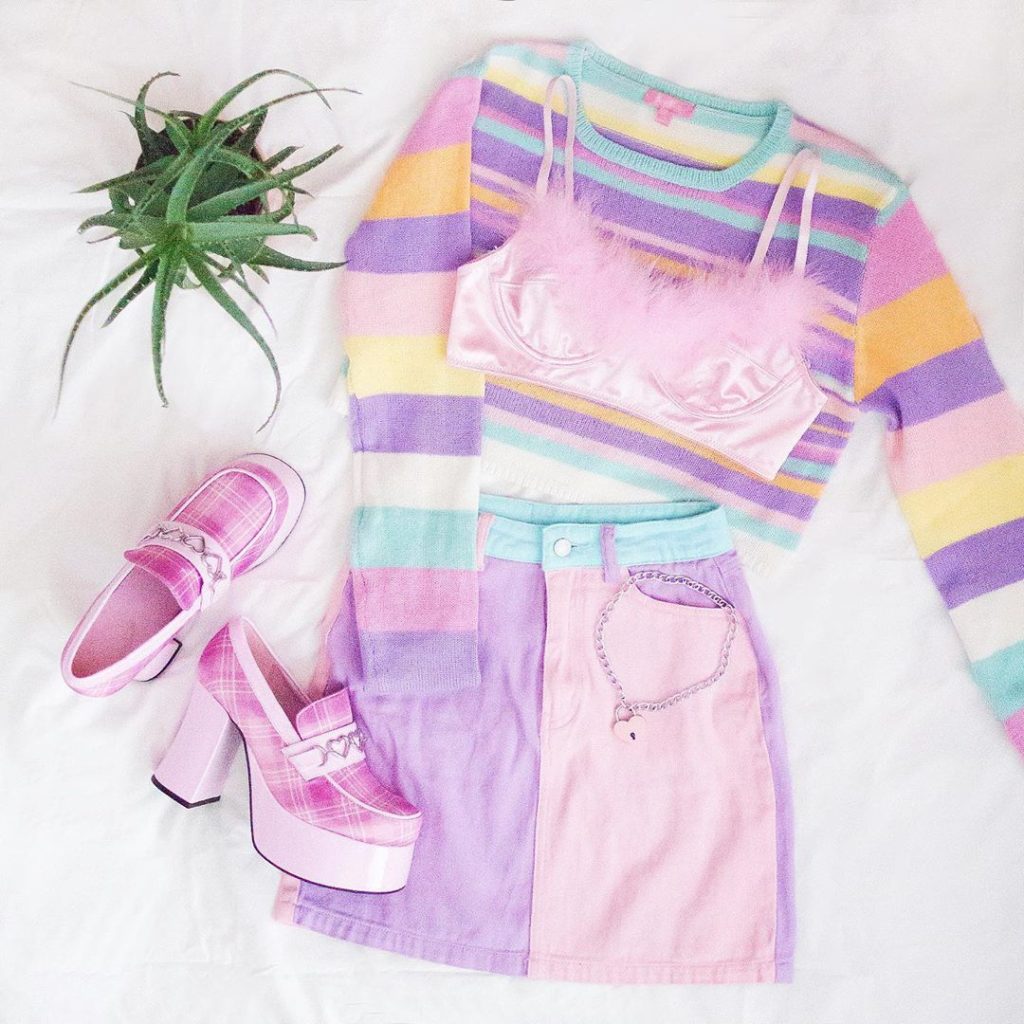Kawaii fashion, a vibrant and whimsical style originating from Japan, embraces a world of playful and imaginative aesthetics that have captured global attention. At the heart of this subculture are various fashion movements, each with its own unique charm and cultural significance. Among these, Lolita fashion stands out for its homage to Victorian and Rococo-era clothing, characterized by its elaborate and frilly designs. Lolita outfits often feature knee-length skirts, petticoats, lace, and ribbon accents, creating an image of innocence and elegance. The fashion is deeply rooted in a sense of nostalgia and a desire to return to a more refined, feminine ideal, reflecting the wearer’s appreciation for craftsmanship and attention to detail. Fairy Kei, another prominent kawaii subculture, presents a more pastel and ethereal aesthetic. This style is inspired by a blend of 80s and 90s pop culture, incorporating pastel hues, glitter, and playful motifs like unicorns and rainbows.

Fairy Kei fashion is known for its carefree and whimsical vibe, often characterized by oversized sweaters, layered skirts, and quirky accessories that evoke a sense of magical realism. The emphasis here is on creating an otherworldly and dreamlike appearance, reflecting a desire to escape the mundane and embrace a fantastical, youthful spirit. In addition to Lolita and Fairy Kei, other kawaii fashion subcultures contribute to this vibrant tapestry. Shironuri, for instance, is a style that involves painting the face white and donning elaborate, often dramatic outfits. The name itself means painted in white, and the fashion often combines elements from historical periods and fantasy genres, creating a striking and sometimes eerie look that challenges conventional beauty standards. Another noteworthy subculture is Gyaru, which focuses on a bold and glamorous aesthetic with tanned skin, dramatic makeup, and high fashion influences. Gyaru culture reflects a more rebellious and individualistic attitude, embracing a mix of Western and Japanese trends to create a distinctive and eye-catching style.
The evolution of kawaii clothes fashion is also marked by the influence of digital culture and social media, which has allowed these subcultures to spread and evolve more rapidly than ever before. Online platforms have enabled enthusiasts to share their creations, connect with like-minded individuals, and draw inspiration from a global community. This connectivity has fostered a dynamic and ever-changing fashion landscape, where traditional styles blend with new trends, creating a fusion of past and present. Ultimately, kawaii fashion is more than just a set of aesthetic choices; it represents a broader cultural phenomenon that values creativity, individuality, and the celebration of youthful innocence. Each subculture within this vibrant world offers a unique way for individuals to express themselves and explore their personal style, contributing to a rich and diverse fashion narrative that continues to captivate and inspire people around the world.
